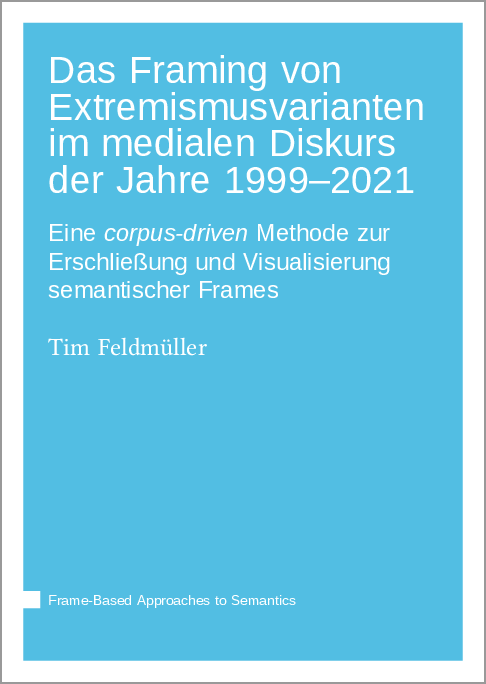We log anonymous usage statistics. Please read the privacy information for details.
Forthcoming: Das Framing von Extremismusvarianten im medialen Diskurs der Jahre 1999–2021: Eine corpus-driven Methode zur Erschließung und Visualisierung semantischer Frames
Synopsis
Die vorliegende Arbeit untersucht das Framing von Extremismusvarianten im medialen Diskurs der Jahre 1999 – 2021 und entwickelt eine corpus-driven Methode zur Erschließung und Visualisierung semantischer Frames. Sie verbindet Frame-semantische Theorie nach Busse mit Methoden und Annahmen der distributionellen Semantik und entwickelt ein Verfahren, um diskursives Wissen aus der musterhaften Verteilung von Wörtern in Korpora induktiv zu rekonstruieren.
Als Datengrundlage dient ein umfangreiches Korpus aus Online-Artikeln der Zeitungen taz, Spiegel und Welt. Methodisch kombiniert die Arbeit Word Embeddings und Kollokationsanalysen, um Frame-Elemente und ihre Relationen zu identifizieren und als Kollokationsnetzwerke zu visualisieren. Dieser Ansatz ermöglicht es, einen großen Teil des verstehensrelevanten Wissens zu erschließen, das zum Verständnis von Extremismus als sozialem Konzept notwendig ist, ohne auf vorab definierte Kategorien zurückzugreifen.
Die Analyse untersucht kontrastiv das Framing von Rechts- und Linksextremismus sowie Islamismus über acht Zeiträume hinweg sowie im Vergleich der Zeitungen. Sie zeigt, wie unterschiedliche Extremismusvarianten in den drei Zeitungen gerahmt werden, welche Akteure als extremistisch gelten, welche Handlungen ihnen zugeschrieben werden und wie sich diese diskursiven Konstruktionen im Zeitverlauf wandeln. Die Arbeit leistet damit sowohl einen methodischen Beitrag zur korpuslinguistischen Diskursanalyse als auch einen inhaltlichen zur Beschreibung des medialen Extremismusdiskurses in Deutschland.
This study examines the framing of variants of extremism in media discourse between 1999 and 2021 and develops a corpus-driven method for identifying and visualizing semantic frames. It combines Busse's frame-semantic theory with methods and assumptions of distributional semantics and develops a method for inductively reconstructing discursive knowledge from the patterned distribution of words in corpora.
An extensive corpus of online articles from the newspapers taz, Spiegel and Welt forms the empirical basis. Methodologically, the work combines word embeddings and collocation analysis to identify frame elements and their relations, visualizing them as collocation networks. This approach makes it possible to explore a large part of the knowledge relevant to understanding extremism as a social concept without resorting to predefined categories.
The analysis contrasts the framing of right-wing and left-wing extremism as well as Islamism over eight time periods and compares coverage across the three newspapers. It shows how different variants of extremism are framed, which actors are considered extremist, which actions are attributed to them, and how these discursive constructions change over time. The work thus contributes both a methodological innovation for corpus-assisted discourse studies and empirical insights into media representations of extremism in Germany.



